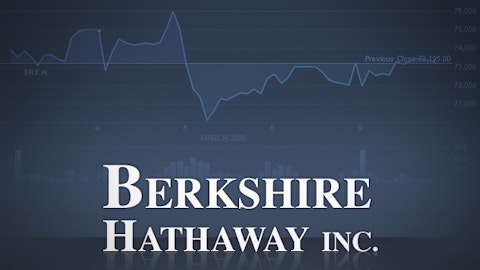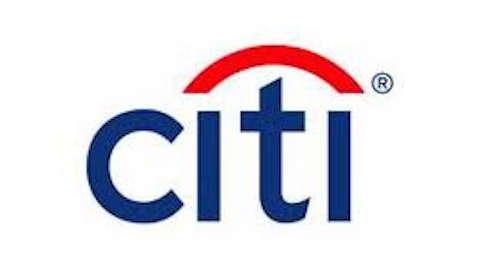One of the lazy bank investing rules is, you buy banks when, I think it’s under 1.5 times book value, or maybe it’s under 1.0 times book value. I would think about in that range, between 1.0 and 1.5 times book value. Then you sell when they’re 2.0 or 2.5 times book value.
When you look at the big banks, in terms of their book value multiples, with the exception of Wells Fargo & Co (NYSE:WFC), which is admittedly a cut above the other three, I think, they’re right in there. I think they’ll get back to those higher multiples, and in the meantime, the economy is going to continue to improve, their businesses are going to continue to improve, so I think you can do really well with the big banks. I think you can do well with some of the mid-tier banks, and I think you can find some great smaller banks.
I think in general, broadly speaking, it’s a sector that investors have been slow to come back to in the wake of the crisis. Understandably so, but I think it’s leaving a lot of opportunity for investors right now, while other sectors in the economy are getting bid up, and I just don’t think are nearly as attractive as the banking sector.
Rick: The big banks are going to be more susceptible to unpredictable global politics and economics. Is that correct to say?
Matt: Sure, some to a greater extent than the others.
One of the interesting things about the big banks is… as we’re talking, I’m grouping them together. People tend to group them together, but they’re very different businesses.
Wells Fargo & Co (NYSE:WFC), for example, is almost fully focused on the U.S. It is a U.S. bank and it serves U.S. clients and customers.
Citigroup Inc. (NYSE:C) is on the other end of the spectrum, geographically speaking. It’s got branches and it’s got locations and it’s got major business throughout the world. It’s almost more of a 50/50 split between what it’s doing in the U.S. versus the rest of the world. It might be even less of a 50/50 split, in favor of the rest of the world.
Then Bank of America, kind of in between those two; more U.S.-focused, but has a lot of global business, particularly through Merrill Lynch, but also through legacy Bank of America investment banking operations. JPMorgan, kind of the same thing, but focused more on growing its global business.
Citigroup Inc. (NYSE:C), definitely has itself lassoed to the rest of the world, particularly emerging markets. JPMorgan yes, a little bit less so. Bank of America, less so still, and then Wells Fargo & Co (NYSE:WFC) not really, so you’ve got a spectrum of how the global economy is going to impact the banks.
The article Big Banks vs. Baby Banks: Which Would You Buy? originally appeared on Fool.com and is written by Matt Koppenheffer.
Matt Koppenheffer has no position in any stocks mentioned. The Motley Fool recommends Wells Fargo. The Motley Fool owns shares of Citigroup and Wells Fargo.
Copyright © 1995 – 2013 The Motley Fool, LLC. All rights reserved. The Motley Fool has a disclosure policy.




